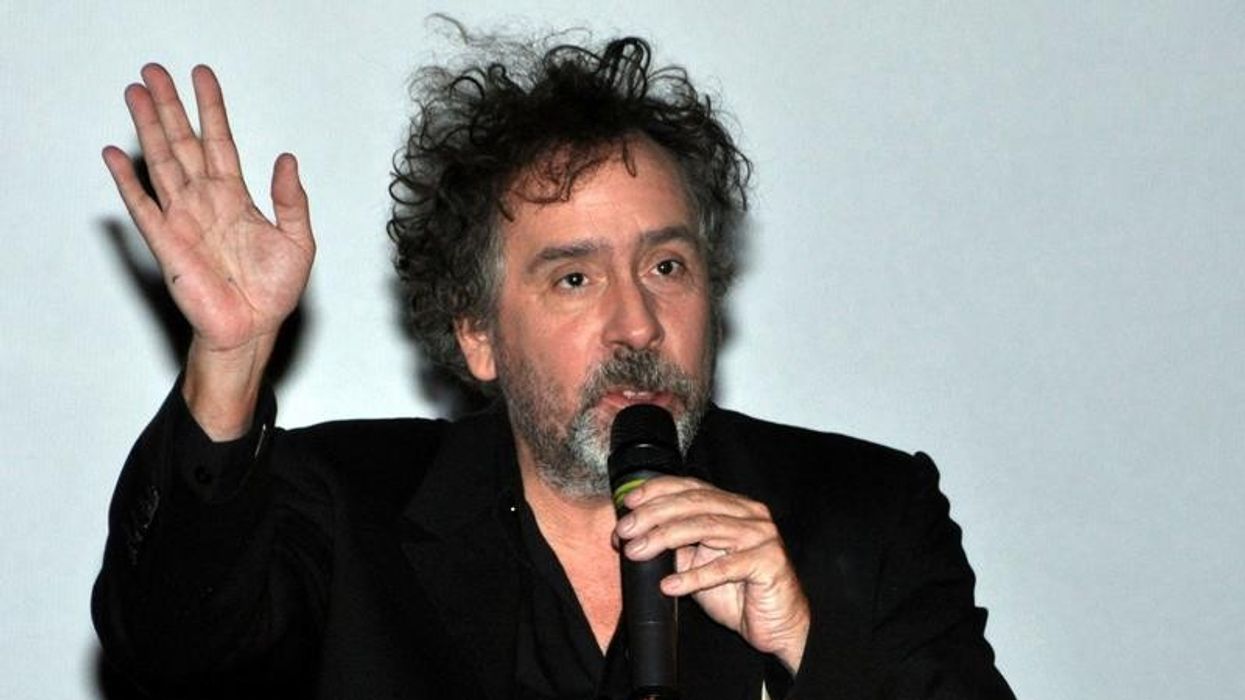10 Directing Lessons Inspired By Tim Burton
Get inspired by one of the most singular voices in all of filmmakers.

Tim Burton
I've been on a kick watching a certain director's movies in order, over the course of a few weeks. Recently, I completed the filmography of Tim Burton, and it was a blast.
Burton is so whimsical and also so macabre. His movies span all sorts of different emotions and ideas, and even sizes. There's so much to learn from him and his movies.
Here are 10 directing lessons we can draw from his work, along with examples from his films.
Let's dive in.
10 Directing Lessons You Can Get From Tim Burton
1. Embrace the Outsider Perspective
Tim Burton's films often celebrate characters on the fringe of society. They are misfits, dreamers, and those who see the world differently. Those characterizations really pull the audience in and get us to care in fun ways. - Example: Edward Scissorhands, Beetlejuice, Lydia Deetz
2. Visual Storytelling is Paramount
I can't tell you how often I'm trying to encourage people to amp up their visual storytelling. Burton's signature style is as important as his written words. Pay attention to set design, lighting, costumes, and camera angles to create mood and atmosphere.
- Example: The gothic cityscape of Gotham in Batman, the twisted trees and landscapes of Sleepy Hollow, the vibrant underworld in The Nightmare Before Christmas.
3. Don't Shy Away from the Dark and Whimsical
Burton blends the macabre with humor and a sense of childlike wonder. This contrast is essential to his unique style and also in bringing in outsiders. He has an audience he plays to, but he finds universal themes that pull us all in.
- Example: The darkly funny dance sequence in Beetlejuice, the mix of horror and festivity in The Nightmare Before Christmas.
4. Music is Your Ally
Spend more time with the music in your films. Burton frequently collaborates with Danny Elfman, and music drives the emotional core of many of his stories. Think about how music can enhance the atmosphere and impact of your work.
- Example: The iconic scores of Edward Scissorhands, Batman, and Corpse Bride.
5. Find the Beauty in the Strange
Burton challenges traditional notions of beauty. He finds compelling visuals in the grotesque, the odd, and the decayed. What do you see differently than the rest of the world? What's inside you that you think you need to share? Get it out and onto film.
- Example: The character design of Jack Skellington, the twisted suburbia of Edward Scissorhands.
6. Practical Effects Can Be Magic
Nothing looks better than a practical set or effect. While Burton embraces technology, he often favors practical effects when possible. And it makes a difference when buying into the worlds. You feel like you're in something he created, something personal.
- Example: The stop-motion animation of The Nightmare Before Christmas and Corpse Bride, the elaborate makeup and prosthetics of Beetlejuice.
7. Collaborate with a Recurring Ensemble
Work with your friends. Find the people you can trust, who have your back, and share your vision. Burton works with actors like Johnny Depp, Helena Bonham Carter, and Winona Ryder repeatedly. This builds a sense of familiarity and shorthand.
- Example: Depp's numerous Burton roles, Helena Bonham Carter's eccentric Burton characters.
8. Personalize Your Work
There's often a deeply personal element to Burton's films, drawing from his childhood and unique perspective on the world. You have a voice, use it.
- Example:Edward Scissorhands reflecting suburban isolation, themes of loss and longing in Big Fish.
9. Don't Underestimate Your Audience
One thing I always appreciate about Burton is that he trusts the audience implicitly. And he's okay with challenging them. Burton crafts films that appeal to both children and adults. He doesn't shy away from darkness or mature themes.
- Examples: The subtle social commentary within Edward Scissorhands, the complex exploration of grief in Frankenweenie.
10. Never Lose Your Sense of Play
Even at their darkest, Burton's films retain a sense of playfulness and mischievous humor. They are so much fun and you can tell were fun to make. It's important never to forget that this is an art form that is inherently playful and bold. So keep experimenting and playing.
- Example: The ghoulish gags in Beetlejuice, the exuberant musical numbers of The Nightmare Before Christmas.
Tim Burton is one of the greatest directors of all time. He's an auteur with a keen eye for cinema and a great sense for spectacle.
Hopefully, these lessons help inspire you to find your own unique voice.
Let me know what you think in the comments.
- What Movies Should a First Time Director Study? ›
- The Beauty of Kitschy Horror in ‘Edward Scissorhands’ ›
- Ewan McGregor, Veteran Actor Turned First-Time Director: 7 Lessons Learned ›
- How to Sound Design the Afterlife (And Evil Babies) | No Film School ›











